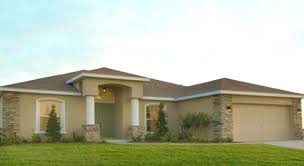 When consumers shop around for homeowner’s insurance, most only get a quote based on their loan amount. Here lies the problem, even though your mortgage company would be okay with you insuring only to cover the loan (their interest), you would be doing yourself a gross disservice, the reason being is the amount you purchased your home for and the amount it would cost to replace your home are two different amounts and most times are at opposite ends of the spectrum.
When consumers shop around for homeowner’s insurance, most only get a quote based on their loan amount. Here lies the problem, even though your mortgage company would be okay with you insuring only to cover the loan (their interest), you would be doing yourself a gross disservice, the reason being is the amount you purchased your home for and the amount it would cost to replace your home are two different amounts and most times are at opposite ends of the spectrum.
Insurance companies require that most homes be insured at Replacement Cost to avoid customers being underinsured and possibly suing insurance companies for the difference it would cost to replace a home. Unless you are in the insurance industry, some terms may be foreign. Words such as Replacement Cost or Actual Cash Value are sometimes hard for insurance professionals to explain to clients.
So let’s break down one term at a time. The term Replacement Cost, for the most part, is precisely what it says; it’s the type of policy that would cover replacing your home in the event of a total loss. The most common type of these policies is an HO3 Homeowner Policy. This policy covers damage to your home and the replacement of your home if deemed necessary, including debris removal. For instance, if a fire in your home results in a total loss, your policy would pay to have your home rebuilt to its original state before the flop.
Actual Cash Value is a little more complicated to define but, for the most part, has been narrowed down to mean the cost to replace with new property of like and quality less depreciation, depreciation implying the decrease in value due to wear and tear. It sounds simple enough, but many have seen that a grey area exists with this type of coverage because determining depreciation can be tricky. These policies are called HO8 / Actual Cash Value policies and are usually geared toward older homes. These policies also have limited water and theft coverage.
The most important thing is that you have adequate coverage if there is a total loss, enough to satisfy your home loan and replace your home if the need arises. The difference in price to have a Replacement Cost policy versus an Actual Cash Value policy is minimal and could save you thousands in out-of-pocket expenses. Your home is your biggest asset; make sure you protect it.


